You can read this article from here

You can read this article from here

Written by CRACKED Readers

Children are stupid. We know it’s not their fault, but it doesn’t stop us from laughing at their innocent, wide-eyed idiocy.
With this in mind, we asked you to depict some of history’s most significant events, as they would be drawn by a five year-old child. We offered $50 to the winner, and the prize-winning entry is below. But first, the runners-up:
#25.

by Illiterati
#24.

by angelbrahd
#23.

by Gambiani
#22.

by CountBaqula
#21.

by Cowtppr
#20.

by brahman
#19.

by mtbutta
#18.

by Salah
#17.

by keviokevio
#16.

by joscott
#15.
#14.

by rhinopig
#13.

by Bell110
#12.

by blemm
#11.

by Boron
#10.

by Sleeper
#9.

by Tim
#8.

by baredevil
#7.

by AgentScarn
#6.

by Senor_Taco
#5.

by B.Leyd
#4.

by chrisolson7
#3.

by Bakudai
#2.
And the winner is …

by Bell110
Congrats, Bell110, you win money.
Written by rtcrooks
Pick up lines, chat up lines, whatever you call them, we’ve all heard at least a few. There are some that will invariably send women running for the hills, and others for which you can only hope the lucky girl is very, very drunk when you let them fly. The bottom line is there is a very negative stigma surrounding these sleazy attempts at starting a conversation that will end in fornication. However, there are some lines that deserve mention and merit a list in such a fashion as we’ve created. These are lines that are good enough to fool a women into thinking you are clever and creative enough to continue talking to you beyond a “yes” or “no” response. While we do not claim to be Mystery AKA the Pickup Artist, we do know that a solid intro is the first step in impressing your potential mate. Here are some of the finest one, two or ten-liners that you are sure to bring success at the bar.
1. How much does a polar bear weigh? Enough to break the ice. My name is _________.
2. Hi, can I buy you several drinks?
3. Inheriting 80 million bucks doesn’t mean much when you have a weak heart!
4. You might as well come home with me because I’m going to tell everyone you did anyway.
5. You look like my second wife, and I’ve only been married once.

6. Excuse me, I think you have something in your eye. Oh never mind, it’s just a sparkle.
7. Your place or mine? Tell you what? I’ll flip a coin. Head at my place, tail at yours.
8. My boys over there bet that I wouldn’t be able to start a conversation with the most beautiful girl in the room. Want to buy some drinks with their money?
9. Get your coat, you’ve pulled.
10. I can sense that you’re a terrific lover, and it intimidates me a little.
11. Okay, so I came over here to ask you to dance, but I’m kind of concerned. I mean, we could hit it off really well, end up having a few drinks, next thing you know you’re giving me your number because I’m too shy to ask for it, I finally get up the nerve to call and we take in a movie, have some dinner, I relax, you relax, we go out a few more times, get to know each other’s friends, spend a lot of time together, then finally get past this sexual tension and really develop this intense sex life that is truly incredible, decide our relationship is solid and stable, so we move in together for a while, then a few months later get married, I get a promotion, you get a promotion, we buy a bigger house. You really want kids, but I really want freedom, but we have a kid anyway, only to find that I am resentful, the sparks start to fade and to rekindle them we have two more lovely kids, but now I work too much to keep up with the bills, have no time for you, you’re stressed and stop taking really good care of yourself, so to get past our slow sex life and my declining self-confidence I turn to an outside affair for sexual gratification. You find out because I’m careless and a lousy liar, you throw me out (justifiably so) and we have to explain to the kids why mommy and daddy are splitting up. That’s just too sad. Think about the children. For God’s sake, if you dance with me and we hit it off, let’s just keep it sexual, because we both know where it’s going.
12. Greetings and salivations.
13. I’m not actually this tall. I’m sitting on my wallet.
14. Did you see the fight outside a little while ago? These two girls were fighting over a short guy named [your name].
15. If I were to ask you for sex, would your answer be the same as the answer to this question?

16. I bet you $20 you’re gonna turn me down.
17. Excuse me. My friend over there is a little embarrassed. He’d like your phone number. He wants to know where he can get a hold of me in the morning.
18. (Give the person a pint of beer) Drink this, then call me when you’re ready.
19. I’d like to name a multiple orgasm after you.
20. Excuse me, do you want a double entendre?

21. Is your husband still on nights?
22. Hi, I make more money than you can spend.
23. You’re going to have to buy me a drink?
Her: What for?
I dropped mine when I saw you.
24. Do you know the difference between a hamburger and a blow-job?
Her: No.
Do you want to do lunch?
25. There is something wrong with my phone. Could you call it for me to see if it rings?
Written by thinksimplenow

Photo by Jordan Fraker. See more of his work here.
Can you remember the last time you stepped into a room full of strangers and felt that self-conscious and awkward feeling rush over you? Or that heart thumping moment when you wanted to ask someone on a date, but were too shy to do so? Or wanting to approach someone for business, but was too hesitant to actually do it? That anxiety in the pit of your stomach in social situations? Does it always feel like something is holding you back?
Regardless of whether you are introverted or extraverted, we can all relate to that feeling of shyness at some point in our lives. Socially, we tend to have the misconception that only introverts experience shyness, but that is not true. Shyness has more to do with being uncomfortable with one’s self, especially around other people.
This article is the result of collaboration between Amanda Linehan, an introvert, and Tina Su, an extravert. Together, we wanted to shed some light on the topic of shyness in a collective perspective from both extremes. We will also share the ways that we used to turn shyness into personal empowerment.
According to Dr. Bernardo J. Carducci of the Shyness Research Institute, shyness has three components:
Can you relate? When you are experiencing shyness, can you fit your state of mind into one or more of the above categories? We sure can.
We all experience shyness differently and on varying degrees. However, root cause can be boiled down to one of the following reasons:
We’ve both experienced different variations of shyness, and through practice and increased awareness we have both overcome this. The following are tips that have helped us overcome this uncomfortable feeling.

Photo by Lauren
1. Understand Your Shyness – Seek to understand your unique brand of shyness and how that manifests in your life. Understand what situation triggers this feeling? And what are you concerned with at that point?
2. Turning Self Consciousness into Self Awareness – Recognize that the world is not looking at you. Besides, most people are too busy looking at themselves. Instead of watching yourself as if you are other people, bring your awareness inwards. Armed with your understanding of what makes you shy, seek within yourself and become the observing presence of your thoughts. Self awareness is the first step towards any change or life improvement.
3. Find Your Strengths – We all have unique qualities and different ways of expressing ourselves. It’s important to know and fully accept the things we do well, even if they differ from the norm. If everyone was the same, the world would be a pretty boring place.
4. Learn to Like Yourself – Practice appreciating yourself and liking the unique expression that is you. Write a love letter to yourself, do things you enjoy, give gratitude for your body and its effortless functions, spend quality time getting to know yourself, go on a self-date.
5. Not Conforming – Trying to fit in like everyone else is exhausting and not very much fun. Understand that it is okay to be different. In fact, underlying popular kid’s public displays of coolness, they too are experiencing insecurities, self-consciousness, and awkwardness. Accept that you may not be perceived as the most popular social butterfly, and you may not want to be either. At the end of the day, being popular will not make you happy. Accepting your unique qualities can set you free.
6. Focus on Other People – Rather than focusing on your awkwardness in social situations, focus on other people and what they have to say. Become interested in learning about others, and probe them to talk about themselves. You can try pondering the question while interacting: What is it about this person that I like?
7. Releasing Anxiety through Breath – Anxiety and fear can feel overwhelming if you are practicing to become more assertive in order to overcome this fear.
8. Releasing Anxiety through Movement – One way of viewing anxiety is that it is blocked energy that needs to be released. We can release this energy through physical movement.
google_ad_client = “pub-1497793594241135”; google_ad_slot = “3402857929”; google_ad_width = 300; google_ad_height = 250;
9. Visualization – Visualizing yourself in the situation as a confident and happy person helps to shape your perception of yourself when you are actually in the situation. Close your eyes, sit back somewhere relaxing, listen to some relaxing music, imagine yourself in a scene or situation and see yourself the way you would like to be. In this scene, how do you feel? What do you hear? Do you smell anything? Are you moving? What do you see? Get all your senses involved to make it real.
10. Affirmation – Words can carry incredible energy. What we repeatedly tell ourselves, gets heard by our unconscious mind, and it acts accordingly. If we repeatedly tell ourselves that we are incapable, and too shy to do anything, we will become increasingly aware of evidence to back up this ‘fact’, and our actions will always match what we tell ourselves. Similarly, if we repeatedly tell ourselves that we are capable, confident, and wonderful human beings, our unconscious mind will likely surface the awareness that gives evidence to this new ‘fact’. While, we can’t lie to ourselves, positive visualization and affirmation are helpful in placing us along the road of positive thought patterns.
11. Do Not Leave an Uncomfortable Situation – When we leave shy situations, what we are really doing is reinforcing our shyness. Instead, face the situation square in the face. Turn the fearful situation into a place of introspection and personal growth. Become the observer and dig into yourself, answer the questions: why do I feel this way? What caused me to feel this way? Can there be an alternative explanation to what is happening?
12. Accept Rejection – Accept the possibility that we can be rejected and learning to not take it personally. Remember, you are not alone and we all experience rejections. It is part of life and part of the learning process. The key lies in how you handle rejections when they come. It helps to be mentally prepared before they happen:
13. Relinquish Perfectionism – When we compare ourselves, we tend to compare ourselves with the most popular person in the room or we compare ourselves with celebrities we see on TV. We set excessive expectations by comparing ourselves unreasonably to people unlike ourselves and wonder “why can’t I be that?” We carry with us a vision of another’s perfection and expect ourselves to fit that exact mold. And when we don’t fit, we beat ourselves up for it, wondering why we are such failures. You see, the problem lies in our emphasis on fitting into a vision we have created in our minds, which is not us. Let go of this perfect image, create visions of yourself out of the Being from who you are, naturally; and let that expression flow, naturally.

Photo via g2slp
14. Stop Labeling Yourself – Stop labeling yourself as a shy person. You are you, you are unique, and you are beautiful. Can’t we just leave it at that?
15. Practice Social Skills – Like any other skill, social skills can be cultivated through practice and experience. The more you put yourself out there, the easier it becomes next time. If you have a hard time knowing what to say, you can practice what to say ahead of time.
16. Practice Being in Uncomfortable Situations – Sometimes, it is not the social skills we lack, but rather the lack of self confidence that we may succeed, and a heightened fear that we will fail. Placing yourself in these uncomfortable situations will help to desensitize your fear towards the situation. The more you force yourself to face it, and to experience it completely, you will realize that it is not that bad after all. It may be hard for your ego to accept at first, but quickly you will find that you can just laugh and enjoy it.
17. The Three Questions – During social settings where you may experience nervousness, periodically ask yourself the following three questions. Doing so will distract yourself from more self-destructive thoughts. Make it your mantra:
18. What is Comfortable for You? – Going to bars and clubs isn’t for everyone, and that’s okay. Understand what feels comfortable for you, and find people, communities and activities which bring out the best in you. You can be just as equally social in settings that you connect with on a personal level, than the popular social settings. You don’t have to be doing what “everyone” else is doing. Besides, everyone else isn’t necessarily happy, despite your perception as such.
19. Focus on the Moment – Becoming mindful of what you’re doing, regardless of what you’re doing, will take focus away from the self. When you are having a conversation, forget about how you look, focus on the words, fall into the words, become absorbed in the words. The tones. The expression. Appreciate it and give gratitude for it.
20. Seek and Record Your Successes – As you overcome this condition we’ve been labeling as shyness, you will have many wins and realizations about yourself. You will gain insights into the truth behind social scenarios. You will start to view yourself differently and come to recognize that you can become comfortable and confident. When these wins and realizations happen, make sure to keep a notebook and write them down. Keeping a journal of your successes will not only boost self confidence, but also shift your focus towards something that can benefit you.
What are some of your moments of shyness? What did you do to overcome them? If you haven’t overcome them, why do you think that is the case & what can you do about it next time? See you in the comments! 🙂
Written by filmwad
Intro paragraphs? Where we’re going, we don’t need…intro paragraphs.
12. You can’t pay attention to the movie
Dates are pretty goddamned stressful experiences. You’re constantly trying to figure out how to act, what to say, where to put your arms, and if and when it’s okay to try and kiss her. They’re absurdly complex, needlessly aggravating social constructs that cause many to go into nervous breakdowns.
In other words, they’re not terribly conducive to a true movie-watching environment. You can’t pay attention to things like character arcs or symbolism when you’re too busy worrying about whether putting your hand on hers would be too forward at this point in the date, or if sticking your penis into the popcorn tub will either be a hilarious joke or just burn really badly.
11. Movie theatres are too almost-romantic

A darkened room with soft seats, smelling faintly of popcorn and dreams, warm and moist with human body temperature. It almost makes one think of sex, given the right date, but the obviously unsexy aspects of movie theaters — stains, spills, the fact that a fucking movie is actually playing — make the place a not-quite-romantic way to spend two hours. One part of your body is ready to engage in a ravenous makeout session with the person sitting next to you, while the other worries about how long it’s been since these seats were sanitized.
10. It’s fucking expensive
Nobody ever just goes to a movie on a date. It’s always dinner and a movie. You can do just dinner, but you can never do just a movie. This means you’ll be spending around fifty to a hundred dollars in a single night, on someone you’ve never even taken out on a date before! Throw in popcorn and candy and maybe IMAX tickets if the movie’s available there, and you’ve got the potential to waste a shitload of money on a first date that might not ever lead to a second.
9. The floors are sticky

And that shit is not sexy. Just pointing it out.
8. You can’t ask for your money back
Now, you can, technically, ask for your money back from the box office before the film’s halfway point if it really, really sucks. But you definitely can’t do that on a date. You’ll just plain look cheap. There’s no turning back if you see a crap film: that money is gone for good.
7. Movies are nerdier than other date possibilities

Dates are moments to be impressive. You can take her mini-golfing, and show her you’ve got a sense of humor whilst doing something mildly athletic. You can take her rock climbing, and show respect for her thrill-seeking ability. You can go to a carnival, and try to regress back to the simple wonder and fun you had as children.
Or, you can take her to a movie and just sort of sit and stare at fictional stories for a few hours.
Of all the things you could possibly do on a first date to impress someone, why take them to a movie? The best dates say, “I’m adventurous,” or, “I’m intelligent,” or “I’m compassionate.” Taking someone to the movies just says, “I like movies.” So what?
6. Two hours is a long time to sit around someone you might despise
Anyone who has been on a blind date knows the feeling: the person you’ve chosen to spend the night with is either really ugly, or your political opposite, or has an abhorrent personality, but you’ve still got to spend the next few hours alongside them because the date has already been arranged.
A crappy dinner, you can always leave early and split the check. A lame trip to a sporting event, you can sneak out. A movie, as previously mentioned, you cannot escape from if you’re the one who paid. Not just your money is gone, but your time, as well: you might possibly have to spend 120 minutes sitting next to the Overweight Racist Demon Date from Hell just because you chose to go to a movie instead of somethign more easily-escapable.
5. Good movies are usually not romantic

No Country for Old Men is probably one of the most incredible movies ever made, but it’s not really something that says “hey, let’s have giddy, experimental sex afterward” to your date. Reservoir Dogs is not a film that inspires cuddling, and The Godfather isn’t exactly the feel-good movie of the century.
Great films are about loss and horror and evil and triumph and sacrifice, and these are the exact things that are not remotely romantic on a first date. After you know where your date stands, sure: take her out to No Country and have a nihilistic good time, then spend the rest of the night contemplating it and trying not to think about Chigurh. If you’ve just met the chick, however, then perhaps a truly great film would simply be too emotionally overwhelming for a first date.
4. Shitty movies infect everything around them with shittiness
Conversely, something like Delta Farce or Madagascar 2 will infuriate both you and your date so much that the entire date will be ruined: the film upon which you were relying on for the quality of your entire date betrayed you, and essentially wasted a combined four hours of your and your date’s lives. Both will be angry, and whoever chose the movie will be blamed by the other, even if that person paid. Unfortunately, the evil of shitty movies can invade your date and ruin it from the inside out.
3. Wall-E will be way more adorable than whomever you’re dating

I know what you’re thinking. “Oh,” you say. “I’ll take this girl I really like to see Wall-E! It’s cute, it’s funny, and it’s a love story so she’ll think I’m really sensitive and want to give me kisses!”
Wrong.
The inherent problem with watching Wall-E is that almost every robot in that movie is at least fifteen times more adorable than you, or anyone you know, will ever be. Wall-E is the single cutest creature ever committed to film, Eve is a cute iPod-looking thing, and M-O steals the goddamn show in the very few scenes he in. Wall-E is an adorable movie, yes, but it’s so adorable that when it’s done, your date won’t be thinking about you — they’ll be thinking about seeing Wall-E again. You will have enjoyed yourself as well, but you’ll also have been officially cockblocked by a three-foot-tall metal box with no elbows.
2. It’s obvious
Women hate cliches, and considering the actual idea of a “date” is quickly being phased out in favor of drunken, passion-fueled hookups at substance-filled parties, maintaining originality is priority one. The “dinner and a movie” date is literally as old as movies themselves. Why would you want to choose the most standard, boring date possibility in the history of date possibilities? Why not bring her a heart-shaped box of chocolates and some flowers, while you’re at it?
1. It doesn’t allow for conversation

With all the etiquette and rules and nervousness that accompanies a first date, it’s easy to forget what they’re actually for: getting to know the other person. With that in mind, can you literally think of a worse way to spend two hours with someone you’re attracted to than sitting next to them for two hours in a dark room, literally without ever making eye contact?
Dates should be about conversation, and not just about some stupid movie you just saw. They’re meant to be about figuring the other person out, finding out what they’re like, who they are. In this sense, a movie is the ultimate distraction from the true meaning of a date: you’ve technically gone out, and you’ve technically shared one another’s company, but you haven’t actually done anything. Nothing is risked, and thus, nothing is gained. It’s a silly waste of time and money.
Why not take her to a monster truck rally instead?
Written by Nivair H. Gabriel

It’s happened to all of us. We read a novel that blows us away, and a few years later its title appears on posters underneath the face of Harrison Ford or Natalie Portman. But at some inevitable point in that darkened theater, the movie takes a turn we didn’t expect. Our eyebrows go up, our lips turn down, and the disappointment begins. Maybe the wrong director or writer can curse an otherwise excellent project – or maybe some things were just never meant to be filmed. Here are 10 books that we think should never have been committed to celluloid.

DUNE by Frank Herbert
There’s no doubt about it: Herbert’s Dune is a bona fide classic. It won the first ever Nebula award and the 1966 Hugo award, and most consider it to be the best-selling sci-fi novel in history. Set in a future where a feudal empire controls the planets of the unvierse, the novel tells the story of young nobleman Paul Atreides and his family’s rule of the desert planet Arrakis. Arrakis is the only source of “melange,” an addictive spice that lengthens lives and makes interstellar travel possible. Herbert’s book explores the power struggles that arise around the spice, and the complexity of human society that exists even in the far future.
Big shoes to fill for a film producer. Yet in 1984 David Lynch wrote and directed a movie version of Dune, rescuing it from development hell and plunging it into bad-adaptation hell. Reviews panned the movie – Roger Ebert deemed it “the worst movie of the year,” and others expressed similar disgust. Despite the movie’s 40-million-dollar budget, its effects were notably cheap, and the screenplay did not hold up to the challenge of translating a four-hundred-page book to screen. You’d think you couldn’t go wrong with Patrick Stewart, Sting, and Jürgen Prochnow, but evidently you very much can.
 FAHRENHEIT 451 by Ray Bradbury
FAHRENHEIT 451 by Ray Bradbury
Who could forget Fahrenheit 451, “the temperature at which book-paper catches fire, and burns …”? Bradbury’s classic 1953 novel takes place in a dystopian future where television has entirely replaced the printed word, and firemen burn books instead of saving lives. The author himself has stated that the point of the story was to showcase how owning a TV set can destroy all interest in literature – so making a movie version seems pretty damn ballsy to say the least.
With that in mind, the 1966 film, helmed by French icon François Truffaut, seems doomed from the start. It certainly didn’t help that there were many notable omissions, like the disappearance of the novel’s nuclear war (which is, let’s face it, a pretty big cut). Julie Christie plays the main character’s wife and his illicit lover, which adds an extra level of pointless weirdness. The bottom line is, there are plenty of books for which you can tell your friends to “just watch the movie.” But in the case of Fahrenheit 451, that probably makes you kind of fascist. Just sayin’.
 V FOR VENDETTA by Alan Moore and David Lloyd
V FOR VENDETTA by Alan Moore and David Lloyd
The book is probably one of the best graphic novels ever produced. Detailing the adventures of a masked anarchist and his sweet blond protégée, Moore’s writing also delves far deeply beyond his two main characters into complex themes of fascism, anarchy, identity, and the meaning of life itself. Nobody is without a story to tell: Even his villains are creepily sympathetic. By the end of the comic, every reader will have at least one Lloyd image burned in their brain, and be wondering – with no small amount of fear – exactly how much control their government does have.
Enter the movie. For the Wachowski brothers, the boys who gave us the two-thirds-sucky Matrix trilogy, setting this story to film was easy. They just had to cut out all of the character depth, change Moore’s nuanced portrayal of British fascism to the cookie-cutter Hollywood standby of Suited White Men, and (of course) turn the subtle, understated relationship of the main characters into romantic pining. But hey, at least they got the costume right.
 A WRINKLE IN TIME by Madeleine L’Engle
A WRINKLE IN TIME by Madeleine L’Engle
Though it’s often marketed as a young-adult fantasy novel, make no mistake: This book is without a doubt a sci-fi classic for all generations, an incredible tale that deftly blends science, speculation, and humanity. L’Engle’s 1962 story invented the concept of a “tesseract” – the fifth dimension, a phenomenon that folds the fabric of space and time. It introduced a mother who cooks dinner on a Bunsen burner, a father whose research leaves him imprisoned on another planet, and a brother and sister whose loving relationship turns out to be the most important thing in the universe.
Mostly we make an effort to ignore it, but it’s true: Many of the great sci-fi writers were (and are) better at dreaming up nifty science ideas than they were at weaving together a compelling story. L’Engle, however, belongs in no such group. Her work was never meant to be a crappy Disney movie, and yet in 2003, a crappy Disney made-for-TV adaptation appeared that one critic described as “lightweight, saccharine, rather slow going most of the way, and somewhat simplistic” as well as “sometimes clunky, and… often uninspiring”. Let us speak no more about it.

THE MINORITY REPORT by Philip K. Dick
Dick’s 1956 short story introduced the chilling concept of “precrime,” a police system whose officers arrest would-be murderers, rapists, and thieves before they get a chance to do their dirty deeds. His futuristic New York City is a world where three future-seeing mutants control who goes to prison and who doesn’t, and free will is a gray area – a luxury that not everyone possesses. One veteran cop, after seeing a prediction that he will kill someone he doesn’t even know, is having none of it.
So what did Steven Spielberg‘s 2002 movie add, besides a gross eye transplant? Well, for one, it brought in Tom Cruise – balding, out-of-shape 50-year-olds are never attractive narrators as far as Hollywood’s concerned, no matter what they might be able to share with us in real life. The setting’s different, too, and names have been changed, but at least it presents the idea with a lot more nifty special effects and a lot less storytelling, right? And that, my friends, is frighteningly endemic of the print-to-film adaptation.
 I, ROBOT by Isaac Asimov
I, ROBOT by Isaac Asimov
This is a revolutionary sci-fi classic, a collection of nine short stories exploring the limitations and dangers of human-created artificial intelligence. Asimov’s 1950 publication of I, Robot established the Three Laws of Robotics, supposedly unbreakable rules which govern the actions of these metal beings, and his short stories read like the best sci-fi mind puzzles you will ever find.
2004’s movie adaptation was undeniably well done, and it ended up being one of the best of the year – due in no small part to Jeff Vintar’s tight script and the total awesomeness of Will Smith and Chi McBride. Asimov certainly meant to get us thinking, so one could imagine he’d be pleased that his work inspired a smart sci-fi thriller like this. As it happens, however, the main plot of the movie is actually lifted from a 1939 short story by Eando Binder that bears the same name; Asimov’s publisher gave his collection the same title, against Asimov’s wishes. The Three Laws of Robotics were only added to the script after the film’s producers secured the rights to Asimov’s anthology. This project, then, has been plagued from the beginning by intellectual property snafus: It’s a confused collaboration of several minds, and it seems that not all the minds involved were properly credited. And since it’s caused most of the problems, can we let go of that title already?

WHEN WORLDS COLLIDE by Philip Gordon Wylie and Edwin Balmer
It’s a crusty old staple of hard sci-fi, a 1933 novel that first saw print as a magazine serial. Wylie and Balmer’s story begins with a South African astronomer, Sven Bronson, who discovers that a pair of rogue planets are headed for Earth’s orbit. Only a small group of scientists believe his claim; they work to build two ships that will carry the beginnings of a new human settlement to one of the rogue planets, which is projected to replace Earth in its orbit. This is the kind of pre-NASA speculation that works best in old-fashioned typewriter font on yellowed paper.
But of course, Hollywood felt the need to put it in Technicolor. The film adaptation did win an Oscar for special effects, but it was 1951, so you decide for yourself if that’s impressive. The movie’s story doesn’t so much explore sci-fi ideas as showcase human hysteria when tidal waves sweep the Earth and survivors are chosen by lottery – and it naturally also allows for the most groan-worthy of romance subplots. And I’d be remiss if I didn’t mention the way the film’s hero pushes his handicapped financier off the boarding ramp as the ship leaves, despite the fact that he funded the entire project. “Politically incorrect” doesn’t begin to cover it. Apparently there’s a remake of the film scheduled for a 2010 release – isn’t one mistake supposed to teach you a lesson?
 STARSHIP TROOPERS by Robert Heinlein
STARSHIP TROOPERS by Robert Heinlein
War sucks, and Heinlein proved it with his 1960 Hugo-award-winning novel. Told from the point of view of Johnnie Rico, a young soldier, this futuristic tale explores a world where only veterans can vote or hold public office – and where humankind battles endlessly with giant bugs. Rico’s flashbacks to his time at school, and his experiences in the military, serve to illustrate the total destruction that war causes.
In the book, the bugs barely ever appear; Rico views them only through a giant battle suit. For the 1997 film adaptation, though, that was not an option – after all, there ain’t a moviegoer born of woman who doesn’t want to see giant grasshoppers. Special effects left little screen time for Heinlein’s philosophy discussions, but director Paul Verhoeven admitted he never got past the first few chapters of the novel anyway. If he hated the story that much, what do you think was keeping him from writing and directing his own friggin’ screenplay?

THE POSTMAN by David Brin
Originally published as two novellas (both of which won Hugo awards), this post-apocalyptic story grapples with the concepts of survivalism, civilization, and hope. In a world destroyed not by disasters but by its own people, one man discovers a worn-out United States Postal Service uniform – and discovers that his fellow humans are so desperate they’ll even take hope from that. The complete novel, published as the two novellas combined, was named the best science fiction novel of the year in 1986 in the John W. Campbell awards.
And then Kevin Costner decided to direct and star in a film adaptation. The 1997 story, while still broadcasting a message of hope, centered that message more around the Postman as a war hero – and don’t forget his tagalong baby mama. The New York Times blasted the movie for its “bogus sentimentality” and “mawkish jingoism,” but Roger Ebert warned that we “shouldn’t blame them for trying.” Well, I think perhaps we should.
 THIS ISLAND EARTH by Raymond F. Jones
THIS ISLAND EARTH by Raymond F. Jones
The year 1952, I’m sure, saw many new creations in sci-fi, but I’m willing to bet that almost none of them were as silly as the interociter – an alien transmission device, which despite its apparent sophistication is about as big as a truck. Jones gave us the interociter in his novel This Island Earth, which told of an alien race that recruited Earth’s greatest thinkers for a group called the “Peace Engineers.” Not surprisingly, the “Peace Engineers” were actually helping the aliens wage an intergalactic war. On a planet that had already seen the genius of 1951’s The Day the Earth Stood Still, this should not have seemed a good candidate for a film adaptation.
Since the movie version of This Island Earth now gets most of its viewings in the form of Mystery Science Theater 3000’s lampoon, the folly of bringing it to film is assured. Plastic skulldomes, toilet thrones, and raspberry bushes are not the stuff of eternal movie classics. Before you adapt a book, my advice is to run it through a quick Mike-Joel-Crow-Tom Servo test. You might be surprised how much money you save on camera equipment and actors.
Written by toxel

Why should ads be boring? Check out this collection of unforgettable advertisements from around the world.
Break Glass in Case of Adventure. [link]

Cars decorated as Nike kicks in Mexico. The front car carrying the ball. [link]

“From up here, I can see BMW of Bridgeport” [link]

This picture of a Nescafe branded building is from Venezuela’s capital, Caracas, and must be among the largest inflatables in the world. [link]


Creative Nestle billboard advertisement. [link]
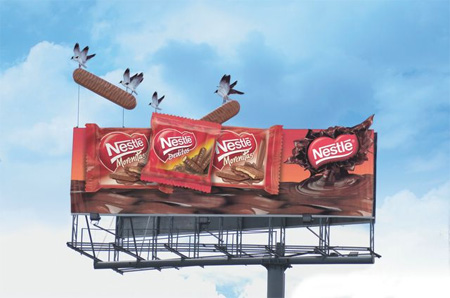
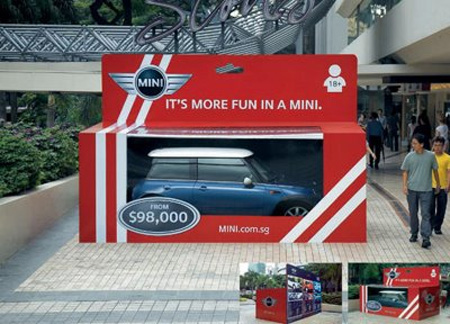
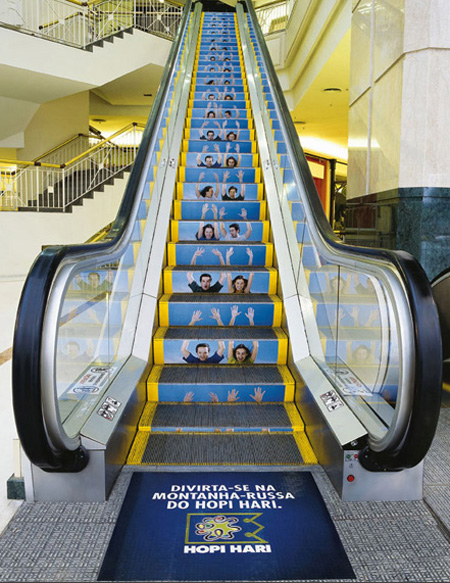
Shopping bags given away to customers when purchasing fitness accessories or nutritional supplements at the Fitness Company fitness centers. [link]

“Please take care this summer” [link]

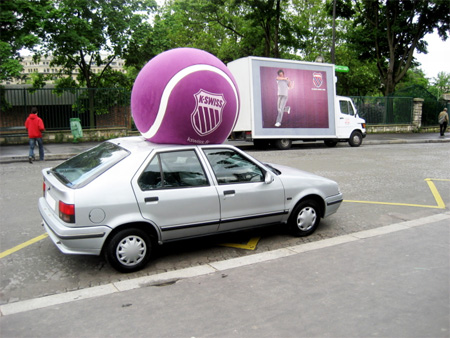
Just what you want while waiting for the bus: that mouth watering, tantalizing reminder of how much you’d love to stuff your face with a 1,000 calorie burger only to be reminded later by your stomach it wasn’t the best decision you could have made. [link]

Powerful idea for a billboard. [link]

Lovely concept, but I think there’s something lost in translation in this outdoor campaign for Goodyear. The sign says:
(front) “Your vehicle has been towed. Call 0800 081-8181.”
(back) “For sticking on the roads.” [link]

When coming up with an ad campaign for FedEx Kinko’s, the innovative minds at advertising agency BBDO were inspired by the streets of New York. The agency installed oversized bottles of correction fluid, highlighters, and, in one case, an office lamp, on the city’s busy thoroughfares for a couple of days earlier this year. [link]
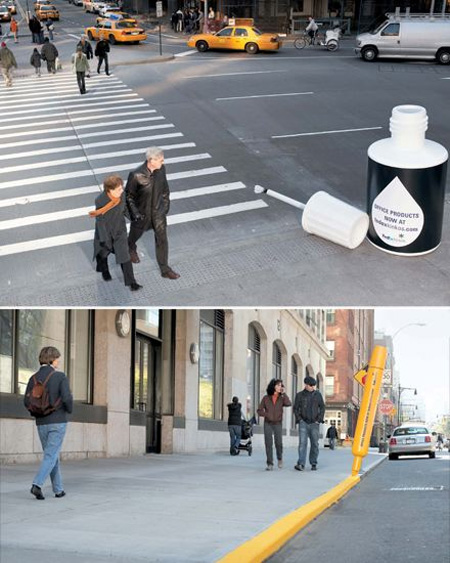
The action is named ‘None of us would like to end up like this.. neither would other-than-human animals’ and it was done with four big foam trays, each of them containing a naked activist inside, and covered with a see-through plastic with a ‘Human meat’ sticker on it. The idea was to imitate the ‘meat’ trays we can find at the supermarkets and to show that we are also animals, just as other-than-human animals, we neither would like to end up there. [link]


Bic developed this creative outdoor advertisement for their razors. The billboard is blank except for a small logo, but without it the advertisement might be missed and it acts as a good backdrop for the giant razor and cut grass. The only draw back is the constant trimming of the lawn. [link]

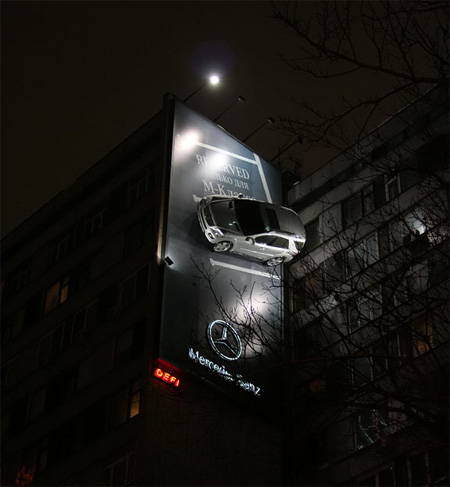
Ikea on Wheels advertisement. [link]
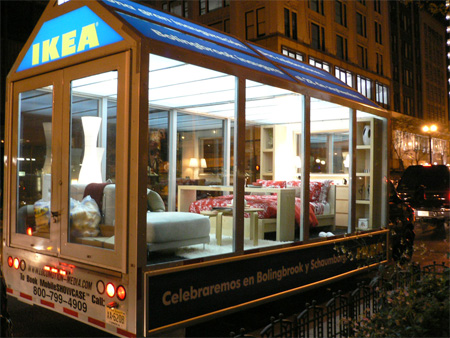
Creative Canon outdoor advertisement. [link]
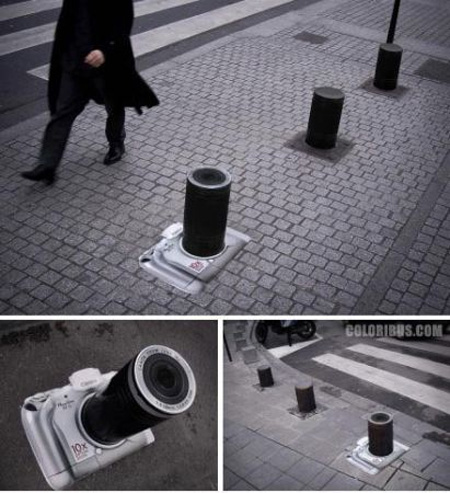
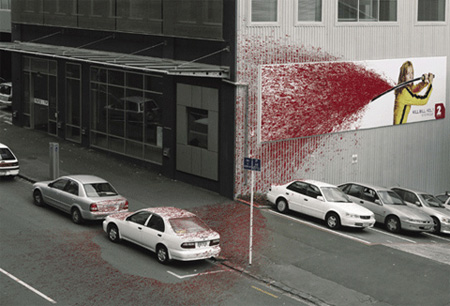
Lego’s ad agency in Santiago (Chile) used cranes to hang giant Lego blocks. [link]


Written by Sean P. Aune
 We’ve put together a list of 30+ must-have Firefox 3 extensions that we know you’ll enjoy, whether you’ve upgraded to Firefox 3 and are looking for something new to add to your browser, or have yet to make the upgrade and are looking for a reason.
We’ve put together a list of 30+ must-have Firefox 3 extensions that we know you’ll enjoy, whether you’ve upgraded to Firefox 3 and are looking for something new to add to your browser, or have yet to make the upgrade and are looking for a reason.
We cover everything from useful tools to social bookmarking and more. Let us know which extensions are your favorites.

ColorfulTabs – Having too many tabs open can lead to a lot of confusion, but this extension will assign your tabs different colors so you can tell them apart easier.
Adblock Plus – The popular, yet controversial extension has been updated to work with the latest version of the browser, and it’s still doing what it does best: blocking ads.
ChatZilla – Add an IRC client to your browser so you can chat in it directly without having to open any other applications.
ColorZilla – An extremely handy tool for Web developers to let them see the RGB and Hex values of any color on a Web page.
Del.icio.us Toolbar – Quickly add bookmarks to your Del.icio.us account, edit tags and access your account.
Digg – Lets you know if the page you are viewing has been dugg, how many it has received, recent comments and more.
DownThemAll – A popular extension that assists you in downloading multiple files from a page with just a few clicks.
Facebook Toolbar – Gives you notifications of new mail and pokes on your Facebook account.

Firebug – A mainstay of the developer community, Firebug strips down Web pages quickly and lets you work on JAVA, HTML, CSS and more, directly inside the browser.
FireGestures – Use five different mouse gestures to control various functions of Firefox.
Flagfox – See a flag in the status bar that tells you what country the server is in for the website you are on. You can then look up more detailed information on the server, giving you some extra security in case the site is a fake.
FlashBlock – Annoyed with Flash animations that play on sites when you launch them? FlashBlock will stop them from playing.
Foxmarks – Have more than one computer? Then you have to have Foxmarks. It synchronizes your bookmarks across multiple computers and gives you access to them via their website.
FoxyTunes – Gives you control over multiple media players directly from your browsers to save you the effort of changing windows.
Forecastfox – Weather forecasts brought to you by the people at AccuWeather.com.
Google Toolbar – Gives you the ability to search Google from a toolbar, access to your mail, auto fill forms and several other features.
Greasemonkey – Greasemonkey is the necessary extension to run the ceaseless stream of Greasmonkey scripts that allow you to customize sites from Facebook to Gmail.

GSpace – Gmail gives you nearly 7 GB of free storage. With Gspace, you can turn some or all of that into free online storage of files that you can access from anywhere.
IETab – Sometimes you just have to look at some things in Internet Explorer due to coding issues. Well, using a tab inside of Firefox is a far sight better than having to open up IE itself.
MeasureIt – An extension perfect for designers that allows you to measure the dimensions of any section of a page to figure out how much real-estate it is occupying.
Meebo – Gives you a sidebar with all of your buddies from the various instant messenger services that Meebo supports such as AIM and MSN.
NoScript – An important extension in your security arsenal as it prevents scripts from running in the background of a website without your express permission.
QuickRestart – One of the most annoying things about adding a new extenstion to Firefox is the down time while it restarts the browser to work properly. This extension speeds up the process.
Reload Every – Allows you to set your tabs to reload every few seconds or minutes, handy for sites like Twitter.
Sage-Too – A lightweight RSS reader you can integrate into your browser.
StumbleUpon Toolbar – Allows you to stumble pages from a convenient toolbar, add comments, view what has been said and more.

TwitterFox – A Twitter client that resides down in your status bar.
Update Notifier – You’ve been adding all these extensions, but it’s easy to forget to check to see when they’ve been updated. This puts the notifications out front where it’s easy to keep track of them.
Video DownloadHelper – Assists you in finding and downloading videos from over 500 websites all over the world.
WebMail Notifier – Get notifications of new email in your status bar for services such as Hotmail, Gmail, Yahoo Mail and more.
Written by Jason Chen
 Of all the ware Microsoft churns out from its sweatshop of “lightning bolt, lightning bolt” nerds, Windows is the one most inexorably tied to the public image of the company. As Bill Gates leaves the building, we look back on the last baby birthed—if not fully gestated—under his watch, the swan song operating system that he himself has issues with. Although we agree that Vista could have used a bit more time shoved back into the silicon womb for some feature buffing and bug fixing, it’s not nearly as bad as most people are making it out to be. That’s right, I’m actually happy with Windows Vista, which I use about one-third of the time I spend at a computer.
Of all the ware Microsoft churns out from its sweatshop of “lightning bolt, lightning bolt” nerds, Windows is the one most inexorably tied to the public image of the company. As Bill Gates leaves the building, we look back on the last baby birthed—if not fully gestated—under his watch, the swan song operating system that he himself has issues with. Although we agree that Vista could have used a bit more time shoved back into the silicon womb for some feature buffing and bug fixing, it’s not nearly as bad as most people are making it out to be. That’s right, I’m actually happy with Windows Vista, which I use about one-third of the time I spend at a computer.
This may be counterintuitive, seeing as our guy who defended Windows doesn’t even like Vista, but I’ve used Mac OS X and Vista side by side and simultaneously for over a year (and before that, Mac and XP) thanks to the dual-computer-controlling app Synergy. Here’s why Vista’s not that bad:
1. It’s more secure than Windows XP. After being implicitly responsible for botnets and security breaches through the incredible popularity of their Windows XP, Microsoft went back and made sure Vista is more secure than its predecessor. And it is. According to security firm PC Tools, Vista had 639 unique threats over a six-month period, whereas XP had 1021. This came from much internal restructuring under the hood, but there’s a chance that it might be due to Vista being a smaller target than XP for malware as well.
2. It’s the best looking Windows yet. Despite any complaints users may have about Aero hogging up too many CPU cycles or requiring a video card from this millennium to use, it’s still the best looking Windows yet. I mean really, do you remember what XP looked like out of the box? With that gigantic balloon of a task bar and the green Start button. Vista’s glass definitely trumps that. And then there’s the underlying graphical framework changes which allow new features like live thumbnails. All these visual effects may require more power, but you can’t deny that it’s pleasing to look at.
If you want to disable Aero for certain applications for performance or compatibility reasons, see here.
3. Games work just about as well as under XP. There’s a slight performance degradation under Vista when compared to Windows XP using the exact same hardware. Is it noticeable? Probably, but it’s somewhere around the level of 10%. There’s also the consideration of DirectX 10 and the visual improvements you’ll get in the future when more developers really take advantage of it. With a slightly better video card, you won’t even really notice that you’re going at 90FPS versus 100FPS.
4. Vista Media Center is a fantastic DVR. Microsoft integrates their fantastic Windows Media Center Edition into Home Premium and Ultimate, and it’s pretty much the best DVR you can get outside of getting a TiVo. Combine it with various Media Center Extenders, of which there are lots (such as the Xbox 360), you can get HDTV streamed to anywhere in your house from one computer in your office. Our only complaint is still that Cable Labs doesn’t allow you to stick a CableCARD tuner onto just any appropriately spec’d Vista PC—you actually have to buy a machine pre-made for CableCARD.
5. The sleep mode works. Sleep mode in Windows XP was essentially a shortcut for locking up your computer and forcing you to reboot. It actually does what it’s supposed to in Vista.
6. Built-in search is better and more useful. Vista’s searching feature relies on cataloging your hard drive, then searching the resulting database to quickly (and easily) find your files. By default it’s just limited to a couple user folders, but if you expand it to your entire hard drive, you’ll be able to find anything fast, much like the way Spotlight works on a Mac. The downside is that during the first day or two, everything slows down while Vista indexes your computer. Best to leave it on overnight or over a weekend while you’re away.
7. User Account Control is useful for some people. I have to admit that I’ve turned this off but UAC—the thing that pops up and asks you for your password whenever you do something on the system level—is useful in theory for many people, especially those who share a family computer. Hide the administrator password from your parents/grandparents/kids so they won’t be able to install any weird apps they’re not supposed to. In practice, it’s a bit annoying in that it pops up for mundane things that shouldn’t really need system-level clearance. It’s a step in the right direction; however, if you want to disable UAC for certain programs, see here.
8. Drivers support isn’t as bad as it’s made out to be. Although “Man gets Windows Vista to work with printer” may be an actual non-Onion headline, the root cause of his original woes was that the man installed a Windows XP printer driver instead of the correct Vista one. But there is a smaller percentage of users who—no matter how old or new their peripheral is—can’t get it to work with Windows Vista. The blame for this lies on peripheral manufacturers who either can’t or won’t update their drivers to support the new OS. There’s not much you or Microsoft can do here, but it’s rarer than you’d think from reading the internet.
9. It’s not any buggier than Windows XP. This is a bit of a corollary to #1, but out of the many, many Vista users we’ve seen, they almost all agree that the only times Vista has crashed or blue-screened on them was when they were doing something they usually don’t do. The OS by itself rarely crashes in everyday use, and compared to even OS X Leopard, it’s pretty damn sturdy. In a year’s worth of daily use, we think the OS has probably only crashed once, if that.
10. Vista is not slow if you have enough RAM. One of the main complaints that users have is that Vista is slow, but they either upgraded Vista from an old machine or they purchased a “Vista Ready” system with only 512MB to 1GB worth of RAM. You can run Vista with 1GB of RAM, but like OS X, you really want to have at least 2GB. Modern operating systems get fatter because they DO more stuff for you under the hood, such as optimizing your memory for the applications you run often so they load faster.
We’re not saying that Vista doesn’t have its faults or that Windows 7 won’t be better, we’re saying that Vista is just not as bad as people are making it out to be. If you’re on XP and you’re afraid to upgrade, don’t be. It’s no worse than Windows XP if you pay attention to the stuff I mentioned above. As long as you’ve got a reasonably decent machine—and if you’re reading Giz it’s likely that you do—you’re pretty safe in upgrading.
That said, we do have some major complaints:
1. Things aren’t where they used to be. Holy shit. This one is the worst. Various settings are hidden under levels of menus, and for some inexplicable reason, Add/Remove Programs is no longer Add/Remove programs. What’s the point of this? So people can use the hundreds of wizards more?
2. File transfers are slower than on XP, which is slightly fixed with Service Pack 1, but still has problems. Here’s the reason why. And if you’ve got problems with slow browsing, see here.
3. Wireless networking is a pain. Windows has never been great at presenting wireless networking with an intuitive UI, and Vista might be even worse than XP in this department. Stuff’s buried behind various weirdly-named menus, which you have to (at least the first few times) guess at to see.
4. Lots of balloon notifications pop up on the taskbar. Here’s how to shut them off.
5. Folder view in Windows Explorer doesn’t remember your settings. Here’s another huge pain users have run into when browsing a folder and all of a sudden having Explorer think that these are photos because there’s just one photo in the directory. Here’s how to turn that off.
Bonus Vista Tip: How to recover files from Vista’s built-in shadow copy here.
Written by BEN JOSEPH

1984
WINSTON: Don’t tell the Party, but sex is way better than totalitarianism.
EVERYONE: Surprise! We’re the Party.
WINSTON: Oh, rats.
The Lion, the Witch
and the Wardrobe
C.S. LEWIS: Finally, a utopia ruled by children and populated by talking animals.
THE WITCH: Hi, I’m a sexually mature woman of power and confidence.
C.S. LEWIS: Ah! Kill it, lion Jesus!
Paradise Lost
ADAM: Paradise has arbitrary dietary restrictions?
DEVIL: They’re really more like guidelines.
GOD: Incorrect.
Moby-Dick
ISHMAEL: I’m existential.
AHAB: Really? Try vengeance.
ISHMAEL: I dig this dynamic. Can we drag it out for 600 pages?
The Great Gatsby
NICK: I love being rich and white.
GATSBY: Me, too, but I’d kill for the love of a woman.
DAISY: We can work with that.
Oliver Twist
OLIVER: Poverty ain’t so bad, what with all the Cockney accents and charming musical interludes.
ME: Thanks to movies, no books were read in the passing of this class.
PROFESSOR WATERMAN: You’re half right.